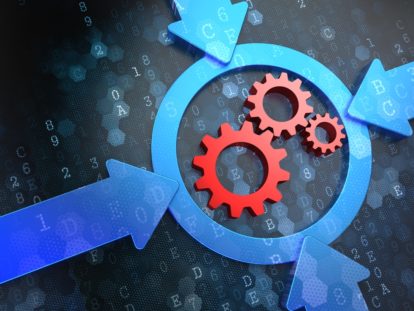If Your Cloud or Data Center Migrations Stall, it’s Time to Rethink How to Manage Change
by Sue Dunnell.

ATMs gave us the freedom to get cash on demand, and today we rarely use cash, instead opting for Venmo or Apple Pay.
How we do everyday things continues to shift as we have access to a steady roll out of new apps and other solutions. We quickly adapt our behavior in response, and we have heightened expectations for even more on-demand and real-time transactions, and decision making – with whichever device we have handy.
The backbone that drives these initiatives is enterprise IT.
And to adapt and build these new solutions, IT is increasingly complex, with new technology stacks, new hosting sites, and increasing regulatory and security requirements.
And yet, the way IT plans, manages, and implements change initiatives has not evolved.
Most IT organizations approach a change initiative such as a cloud migration, data center consolidation, disaster recovery plan, or a technology refresh by first segmenting the project, often by business unit.
They gather data about the IT assets for each unit, identify key business constraints and requirements, figure out how many resources will be needed to execute the change, and then put it all in a spreadsheet. A plan is created, and data gathering begins for the next business unit. Sometimes, work is done in parallel – assets are migrated for one group while planning is underway for the next.
In theory, this process makes sense – it may enable them to demonstrate some progress quickly and produce quantifiable results.
However, I would argue that this approach is flawed, as evidenced by the many projects that can’t get off the ground, or start and quickly stall — without IT having any idea why, or how to fix things. In fact, 51% of cloud adoption projects stall or are abandoned due to unexpected challenges.
This traditional approach doesn’t give the team the ability to view their entire IT landscape – what applications exist, where they’re hosted, who the app owners are, their level of criticality to business, which other assets and applications they depend on, the technology they leverage and the infrastructure they run on.
By segmenting the project by business unit, geographical location, or other grouping, it becomes more difficult to spot dependencies across assets and understand the impact of change. The team struggles to glean insights about asset relationships from spreadsheets and it’s not even possible if the data is considered only one department at a time.
And, when any change is made in IT, it has to be done with consideration of business, governance, security, and compliance requirements.
For example, when infrastructure needs to be replaced, IT must do so without disrupting service to critical systems. When considering a new office in Europe, personal data regulations and security requirements must be considered. Doing an app rationalization assessment requires the ability to consider and evaluate all applications and understand their criticality to business.
The bottom line is, when IT is modernizing apps or infrastructure, moving assets or infrastructure, or managing ongoing initiatives, it’s critical to have a deep understanding of their entire IT environment.
It’s time to rethink how IT manages change.
Gartner found that on average, enterprise IT organizations make 10,000 changes each year. As IT accelerates the adoption of AI, ML, and edge technologies to meet consumers’ demand for more intelligent and interactive experiences, there will be more change, more complexity, and more risk. So what can IT do to keep pace?
To successfully plan, manage, and execute change and mitigate risk in the process, IT needs insight into complex IT environments so they can understand and manage the impact of change.
Four essentials to better manage change
1. Capture complete information
The foundation for all good decision making is good data. While IT is replete with data from multiple sources, it isn’t easy to capture the needed data from disparate sources to make decisions. Different users have access to different data sources, and no single person has access to all data. IT needs to consolidate data, making sure to account for duplicates and having a way to validate its accuracy.
2. Dig for the insights into complex hybrid environments
IT needs to understand how applications and other assets are interrelated across their complex environments – because if a critical business app goes down, teams must quickly identify all the assets that app depends on to quickly restore service. This requires access to gain insight to understand relationships and dependencies across assets.
3. Collaborate across business units
When IT understands the business constraints, requirements, and restrictions, they can better plan and manage change while minimizing impact to business. And when business understands the complexity of IT’s responsibility, it builds trust and an environment of teamwork with everyone working toward the same goal. In this complex environment, information needs to be shared so that teams make better decisions.
4. Build orchestrated workstreams
As workstreams become more complex and include both human and automated tasks, it is increasingly critical that tasks are executed in the right order at the right time. While automation helps accelerate change, it is not enough by itself. Automation accelerates discrete processes, but orchestration is still required to coordinate tasks and the flow of data across discrete processes.
IT has always been an environment of change, but today’s accelerated pace is unprecedented. IT has become the engine for the business’s ability to innovate and deliver on strategic initiatives. This means more complexity and more risk. And the only way to manage any type of change in this environment is to be sure you have insight into the relationships across assets and a complete understanding of the business factors that impact each asset.
TransitionManager was built for practitioners by practitioners to manage change, and eliminate risk in execution. Restart your stalled project with our Jump Start:
